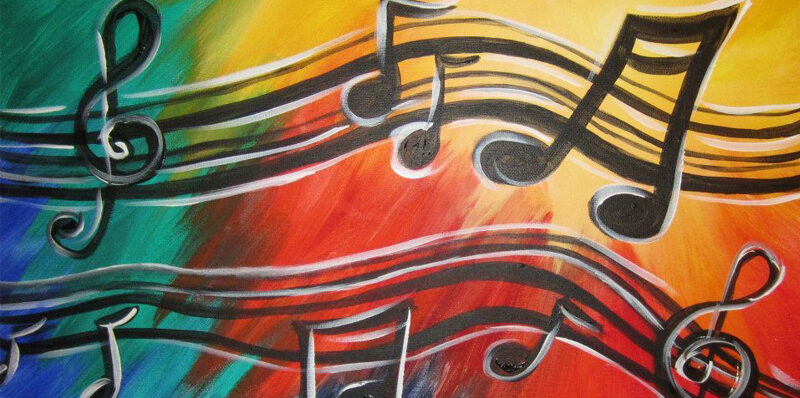It sounds a little poetic to say so, but rhythm is really everywhere. The flowing river has rhythm; water dripping from a tap has rhythm, all of nature pulses to a certain beat. All people also have rhythm and this can be the key to connecting to other people, especially when working in or leading a team! Any theatre group or dance group or music band knows this. Anyone who has rowed crew knows this. Mainly because their activities are such that the rhythmic element is rather dominant. But in all interpersonal work, rhythm can be a very useful tool to explore synergies.
In my work at The Arts Quotient, I have seen the collective power of groups that can achieve synchrony and it is almost magical to watch. People are connected to each other and are able to perform a task with minimal use of words. They watch, observe, give more space to others and are able to extend support where needed. There is stillness when a group is in flow and high engagement for the entire team. There is excitement in being part of such a group and even if the rhythm drops (it tends to do that…it comes and goes), the positivity it generates stays for a long time so that people are motivated to try again! Worth putting effort for? Very much!
Here are three pre-conditions for this positive group performance state to occur:
Optimum level of challenge – For a working team to fall into rhythm, there needs to be something in it for everybody, or at least they need to see it that way. And this is something the leader can help with – perspective on why a role is important and interesting.
Clear rules – so everybody knows what is expected of them. If there are no rules, people tend not to have as much fun. Weird but true! Success parameters have to be set out so people know whether they are doing well or not even in games.
Focus – Clear the clutter! If individual members are thinking of what they will have for dinner or of a fight they had before entering the stage or get distracted by calls during a show, naturally they will get disconnected from what is going on. So, if a team is meeting to work, the space and time needs to be free of distractions.
How to get into rhythm?
Some people are naturally gifted with a very good sense of timing and rhythm. I have seen this in some of my very young students when I teach dance. They are able to effortlessly hold a beat, while some others feel hopelessly challenged in this domain. On an aside, while broader musical intelligence seems to be independent of mathematical intelligence, I have definitely observed a link between this natural sense of rhythm and performance in school maths. The children who are able to divide time into equal measures of seven or eight or three as the song demands also are the ones who like and understand maths.
But luckily, this is something we can train for. Even as adults. And the way to get there is a lot of fun!
There are many games and exercises that we use to facilitate teams to find a common rhythm. Any book or website about theatre games will give you an idea of the sort of thing. These are a great way to get started. In practice, there are two techniques that people can use to help find this rhythm.
1. Rituals – Just as morning rituals help us as individuals to wake up and find our individual rhythm, team rituals help people connect. And best if this is a physical activity. I am not saying that a whole department should do thirty sit-ups at their desk or sing a prayer like school assembly every morning, but having a team perform short series of familiar tasks before they get into their stride can be very comforting and energizing for team members. E.g. using rhythmic clapping as a way to get workshop participants corralled after a break is easy and fun! Everybody joins in and claps till the last member connects in to the group. Clapping together leaves you feeling good and focussed and ready to engage once more! Get creative with what these rituals could be!
2. Listening – a lot of rhythm is about LISTENING. Ho hum! Have I lost you already? Sounds like an OB textbook or self-help maxim? But I am afraid there is no short cut around this one. Listening with an open, flexible mind is the key to keeping time with music, falling into step with someone you are walking with, or connecting with a team member. We do this exercise where people have to walk in time to music. What happens when they hear a song, especially a familiar song, is a parallel universe of that song gets opened in their heads and they get lost in that and miss beats. It is the same in conversations, especially when something someone is saying sounds so much like something else we are familiar with – immediately we think of how we responded last time, or we start preparing our response before the other person can complete, or just tune out completely. Listening is not a skill we are born with (although the first sense that develops in the womb is hearing!) and everything in our world is geared towards visual experience. Listening needs continuous practice, and even though I may train people on how to listen, people at home will agree that I need continuous practice too 🙂
Most importantly, it does not matter if we drop a beat now and then. If we can find a way to get into a rhythm with the people we work with, it can be a very rewarding experience!
read it on Linked in – https://www.linkedin.com/pulse/rhythm-key-connect-sangeetha-rajan?trk=portfolio_article-card_title
